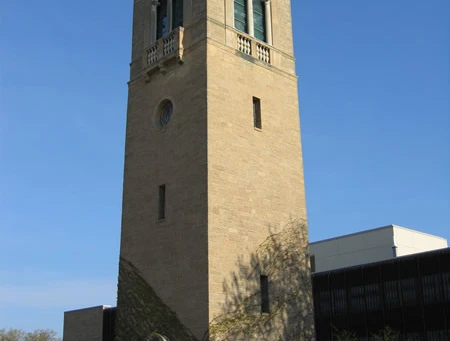Engagement Culture in Academia: A Budding “Trickle-Up” Effect
By Niveen AbiGhannam
Title: Public engagement: Faculty lived experiences and perspectives underscore barriers and a changing culture in academia
Author(s) and Year: Mikhaila N. Calice, Becca Beets, Luye Bao, Dietram A. Scheufele, Isabelle Freiling, Dominique Brossard, et al.; Published in 2022
Journal: PLoS One (Open Access)
| TL;DR: Focus groups at a land grant university show that both pre-tenure and tenured faculty face institutional barriers to engaging with the public. Junior faculty, however, are challenging those barriers and expect academic institutions to support public engagement. Why I Chose This Article: My research focuses on the motivations and expectations of scientists when communicating about their research. I was therefore interested in this article’s approach and findings. |
Organizational Structures in Academia
The top-down leadership approach is often viewed as a “propeller” for institutional success in academia– provided that “the right person is the leader.” However, this view is often challenged by movements that support implementing different organizational approaches at higher education institutions based on the context and the goals that need to be achieved. As Liudvika Leisyte puts it in a 2016 Inside Higher Ed article, “On one hand, organizational structure is a constraint for the behaviour of its individual members. On the other hand, (collective) action of the academics can change the organizational structure.” This collective bottom-up action is especially relevant and needed in the context of public engagement exercised by faculty at academic institutions.
The Context: Engagement Culture at Academic Institutions
Survey studies on public engagement with science have identified several factors that can impact scientists’ willingness to engage with the public. Those factors range from individual (intrinsic) motivations (such as personal enjoyment and a sense of responsibility towards the public) to external (extrinsic) motivations (such as getting recognition and promotion and achieving certain goals). Unsurprisingly, institutional culture– which is broadly defined as how faculty internalize their own career goals in light of their institutions’ expectations for teaching, research, and service– can impact the way scientists perform their duties as university faculty, including their willingness to engage with the public.
The Details
In this study, Calice and colleagues explore the perspectives and experiences with public engagement of faculty at a land-grant university. Their goal with this qualitative work is to identify potential differences among faculty based on both the academic stage and the engagement level in their departments. The researchers hoped to get a focused look at the perspectives and experiences of different groups of faculty based on their academic stage (pre-tenure vs. tenured) and the level of public engagement produced in their departments (high vs. low engagement).
The questions posed to the focus groups centered around three main themes: 1) their perceptions of what engagement broadly means, 2) factors that impact their willingness to engage, and 3) their preferred audience. The transcripts were then analyzed using a combination of deductive (which involves looking for specific themes found in previous literature) and inductive (which involves coding novel themes that emerged from the focus group) approaches. As a result, the authors found themes relevant to definitions of public engagement, institutional factors such as motivations and barriers, audiences, mentorship, and graduate student influence.
The Results
The focus groups revealed interesting themes, especially regarding the importance of considering public engagement work in promotion and tenure, as well as the changing culture in academic institutions that is mainly led by junior faculty and graduate students. The focus groups also revealed the importance of mentorship in both catalyzing and blocking public engagement activities. Interestingly, those themes emerged across all four focus groups, regardless of the participants’ career stages or departments.
This study also documented two opposing perceptions shared by academics at research-focused public universities: a sense of responsibility to engage with the public as an ethical or moral obligation of working at a public university, countered by a set of institutional barriers in relation to the availability of time, resources, and reputation among academics. The assessment of those contradictory perspectives often leads to a range of decisions in relation to the extent and type of public engagement activities by academics. Often, faculty at academic institutions end up perceiving public engagement as a secondary activity that is at best considered as “icing on the cake” and at worst an unnecessary waste of time that takes away from the time faculty should spend on developing their research or teaching.
The Impact
This study can offer important insights for science communication trainers and practitioners who are looking to work with scientists who are based at academic institutions. The faculty’s individual and institutional perspectives, and their lived experiences, can impact their willingness to engage as well as the extent of their engagement. For instance, junior faculty and graduate students from various disciplines may represent a more receptive group to science communication training. Additionally, organizations looking to improve the scope of public engagement activities at academic institutions can capitalize on junior faculty and graduate students as forces of change in the traditionally stiff and slow-to-change academic culture.
In fact, the authors wrapped up their discussions with examples of bottom-up investments that interested organizations can develop to support meaningful engagement between academic researchers and the public, such as the Civic Science Fellows program, minors in science communication, as well as requiring or incentivizing science communication training.
As Leisyte puts it in her Inside Higher Ed article: “For significant change to happen both bottom-up and top-down initiatives will be paramount, and smart management based on transformative governance principles must be coupled with dialogue with institutional entrepreneurs.” Proponents of improving public engagement at research universities should thus navigate those two organizational approaches in the context of public engagement.
Edited by Stephanie Deppe and Joshua Buchi
Cover image credit: Carillon Tower at the University of Wisconsin- Madison

